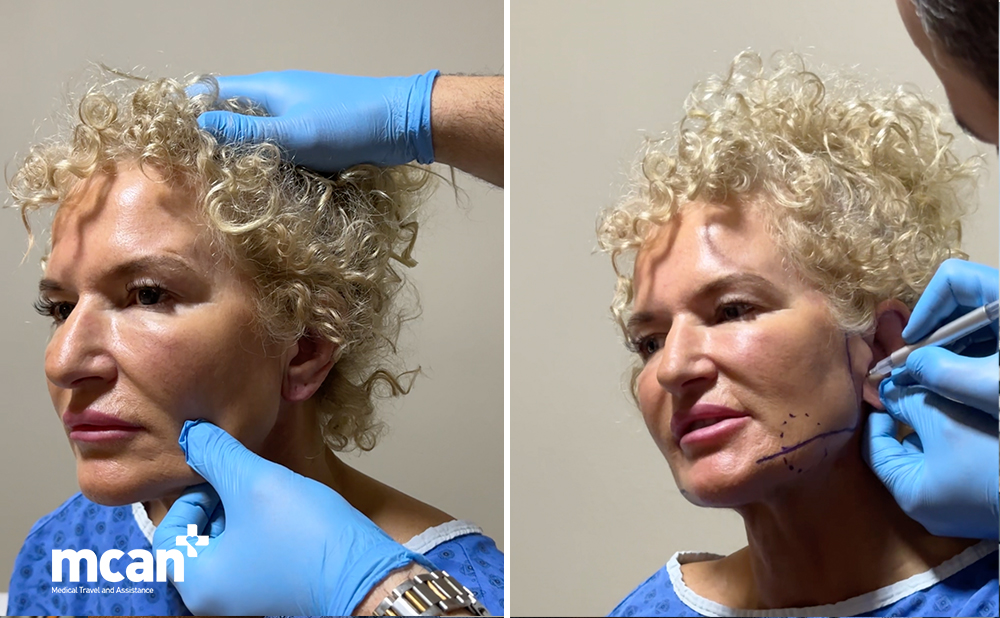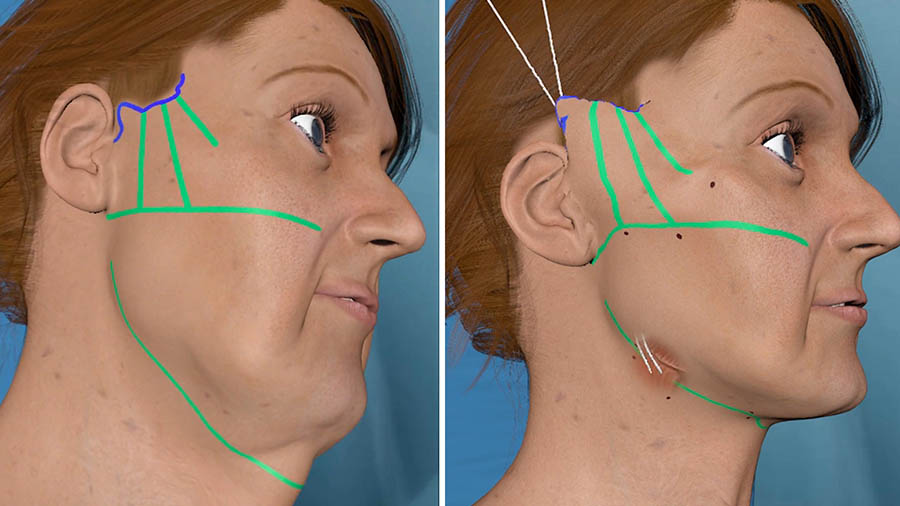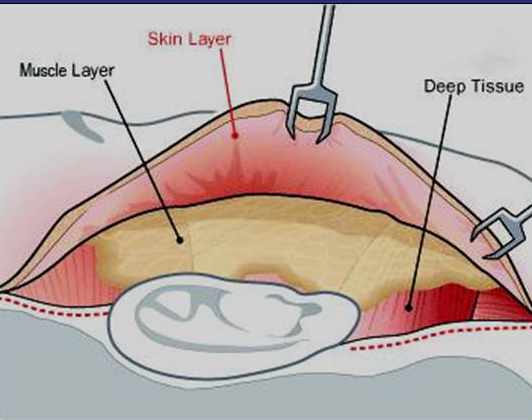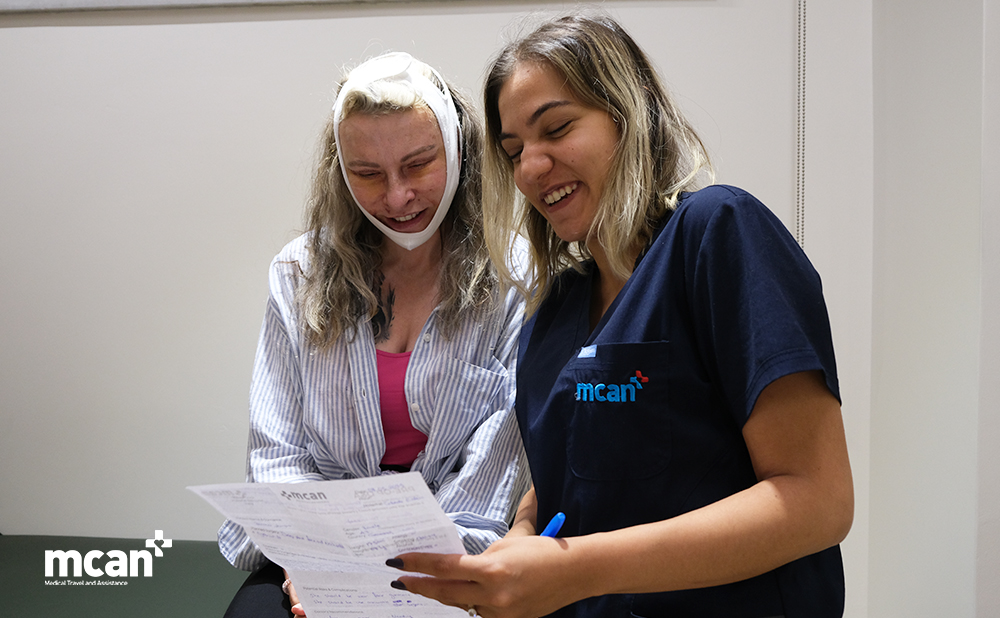
The pursuit of a youthful, refreshed appearance has evolved dramatically over the past decade and so have the surgical techniques behind it. Among these, the deep plane facelift has emerged as a gold standard for those seeking natural, long-lasting facial rejuvenation.
Unlike traditional facelifts that focus on pulling the skin tighter, a deep plane facelift works beneath the surface, targeting the deeper layers of muscle and connective tissue. This method lifts the midface, smooths the nasolabial folds, and restores youthful contours without the tight or “windblown” look often associated with older facelift styles.
But what makes the deep plane approach so effective and more importantly, is it right for you?
In this article, we’ll break down the science and artistry of the deep plane facelift, how it differs from other methods, who benefits most from it, and why more patients are traveling to Turkey to undergo the procedure with trusted clinics like MCAN Health.
What Is a Deep Plane Facelift?
The deep plane facelift is considered one of the most sophisticated and effective facelift techniques available today. It differs from traditional facelifts by addressing not just the skin, but the deeper structural components of the face, particularly the SMAS layer (Superficial Musculoaponeurotic System), as well as fat pads and supportive ligaments that influence facial sagging.

As we age, these deeper tissues begin to descend, contributing to nasolabial folds, jowls, and loss of cheek volume. Unlike the more superficial lift of standard facelifts, which may only tighten the skin or SMAS layer separately, the deep plane approach works beneath the SMAS; lifting skin, muscle, and fat as a single unit. This layered repositioning enables a more natural contouring of the midface and jawline, without the tight or “overdone” appearance sometimes associated with traditional methods.
Surgeons release the facial ligaments that tether the SMAS to underlying tissues, particularly near the cheeks and nasolabial folds, allowing these areas to be repositioned with greater freedom and precision. The goal is to restore youthful facial volume and structure, not just eliminate loose skin.
Key benefits of a deep plane facelift include:
- More natural results by lifting deeper tissues instead of stretching the skin
- Improved cheek projection and smoother nasolabial folds
- Stronger and longer-lasting outcomes, often 10–15 years
- Enhanced jawline and neck contour without visible tightness
In the video below featuring Julia’s case study, you can see how the deep plane facelift method is applied in practice, highlighting the surgical precision and the natural-looking results this technique delivers:
If you’re unsure whether you’re ready for a facelift or which type fits your aging concerns, explore our guide Is a Facelift the Right Choice for You? Key Signs to Consider & Questions Answered.

How Is a Deep Plane Facelift Different from Other Facelift Techniques?

While all facelift techniques aim to reduce visible signs of aging, the deep plane facelift stands apart in both its depth and philosophy. Rather than treating only surface-level sagging, it addresses the root cause of aging by lifting the deeper facial structures as one continuous unit.
Here’s how it compares to other popular facelift types:
| Facelift Type | Treated Layers | Key Focus Areas | Typical Results | Longevity |
|---|---|---|---|---|
| Mini Facelift | Skin & minimal SMAS | Lower face, mild sagging | Subtle rejuvenation with shorter recovery | 2–5 years |
| SMAS Facelift | Skin + SMAS (separately) | Jawline, nasolabial folds | Moderate lift, good for early to moderate aging | 5–10 years |
| Deep Plane Facelift | Skin, SMAS, fat pads (together) | Midface, cheeks, jawline | Natural volume restoration, dramatic improvement | 10–15 years |
Key distinctions of a deep plane facelift are as follows:
- SMAS release: Unlike the SMAS facelift which only pulls or folds the layer, deep plane surgery releases and repositions it, allowing for greater lift with less skin tension.
- Midface volume restoration: Traditional facelifts often fail to lift the cheeks, leading to a flat or pulled appearance. Deep plane lifts the cheek fat pads for true midface rejuvenation.
- Natural motion preservation: Because it doesn’t overly tighten the skin, the result maintains natural facial expressions and softness, even when smiling or speaking.
For a detailed breakdown of different facelift targets and effects, including options for full and lower lifts, read Full Facelift vs Lower Facelift.
How the Deep Plane Facelift Works

As deep plane facelift is more than a surface-level procedure, it targets the foundational layers of your facial anatomy. By addressing the deeper structures beneath the skin and SMAS (superficial musculoaponeurotic system), it offers transformative results that remain true to your natural appearance. Here’s a breakdown of what makes this approach uniquely effective:
Deeper Tissue Elevation for a More Natural Lift
Rather than simply tightening the skin or SMAS separately, the deep plane technique lifts the muscle, connective tissue, and facial fat pads together as a single unit. This enables the surgeon to reposition these layers naturally, avoiding the over-tightened or “pulled” look that can occur with older methods. The result is rejuvenation with preserved facial dynamics, particularly in the cheeks and jawline, where volume and lift are key.
Ligament Release Unlocks Greater Mobility
Certain facial ligaments, especially those near the nasolabial folds and jawline, act like anchors that restrict how much the tissues can move. The deep plane method involves carefully releasing these retaining ligaments, allowing for more freedom to reposition sagging areas vertically rather than just horizontally. This is crucial for achieving natural correction of deep folds and jowling, especially in the midface region.
Volume Preservation Avoids the Hollowed-Out Look
One of the major aesthetic pitfalls of traditional facelifts is the unintentional removal or compression of facial fat. By working beneath the SMAS and repositioning tissues rather than removing them, the deep plane facelift helps maintain the fullness of youth, particularly in the midface and cheek area. This avoids a gaunt appearance and instead restores a soft, lifted contour.
Reduced Skin Tension for Better Healing and Hidden Scars
Because the lift happens below the skin layer, there’s minimal tension on the skin itself. This has two major benefits: reduced risk of scar widening and more discreet incision placement. Patients typically heal with scars that are easily concealed along natural creases, such as behind the ears or along the hairline. It also contributes to a more natural look with smoother skin draping.
Why Deep Plane Facelift Lasts Longer
One of the standout benefits of the deep plane facelift is its exceptional longevity. By working on the deeper structural layers of the face, this technique offers durability that surpasses more surface-level approaches. Here’s why the results hold up so well over time:
- Deeper tissue repositioning: Unlike traditional facelifts that focus on skin or superficial layers, the deep plane method lifts the deeper facial muscles and fat pads together, creating more stable support for the face.
- Improved structural integrity: By repositioning the SMAS layer and associated tissues as a unit, this technique directly addresses the components that shift with age, leading to longer-lasting results.
- Resistance to gravitational descent: Because the lift occurs beneath the SMAS and not just at the surface, the face resists sagging over time more effectively than with surface-level techniques.
- More natural aging process: Since the deep structures are repositioned rather than tightened at the surface, the face continues to age naturally without the tight, pulled look that can appear years after a superficial facelift.
- Extended result duration: Most deep plane facelift patients enjoy results that last 10 to 15 years or more, reducing the likelihood of needing a revision in the near future.
Is Deep Plane Facelift Better Than Traditional Facelift?
While both facelift techniques aim to restore youthful contours, their approach and impact vary significantly. Below is a direct comparison to help you understand how the deep plane facelift stands out in several key areas:
| Feature | Deep Plane Facelift | Traditional Facelift |
|---|---|---|
| Midface Rejuvenation | Lifts deeper facial structures, improving cheeks and nasolabial folds | Limited effect on the midface, focuses mainly on jawline and neck |
| Natural Movement | Maintains dynamic facial expressions due to anatomical repositioning | May create tightness or restricted movement if over-tightened |
| Longevity of Results | Typically lasts 10–15 years, thanks to deeper tissue lifting | Often lasts 5–10 years, results may fade sooner with superficial lifting |
| Skin Tension | Minimal skin tension, reducing risk of a pulled look and visible scarring | More tension on the skin, which can cause quicker relapse or unnatural appearance |
| Scarring and Healing Quality | Subtle, well-hidden scars due to low-tension closure | Scars may be more pronounced depending on tension and closure technique |
| Anatomical Precision | Targets true aging causes at the muscular and ligament levels | Works above key structures, offering limited correction of deeper sagging |
To explore various facelift types and determine which may suit your needs best, check out our article titled The Ultimate Guide to Facelift Procedures: Which One Is Right for You?.
Deep Plane Facelift in Turkey with MCAN Health

Choosing a deep plane facelift means investing in subtle, natural rejuvenation that lasts and doing so in Turkey with MCAN Health ensures the journey is just as rewarding as the result. At MCAN Health, this advanced facial rejuvenation procedure is performed with meticulous precision by internationally recognized plastic surgeons who specialize in deeper structural techniques.
Why patients from across the globe trust MCAN Health for their deep plane facelift:
- Expert plastic surgeons with years of experience in deep plane and advanced facelift techniques
- All-inclusive packages covering surgery, hotel accommodation, VIP transfers, and nurse support
- Accredited hospitals equipped with cutting-edge surgical technologies and safety standards
- Bilingual care team and personalized support throughout your medical journey in Istanbul
- UK-based aftercare office offering peace of mind and continued support after you return home
Curious about transforming your profile with confidence and artistry? Discover what a deep plane facelift in Turkey can offer, and let MCAN Health guide your experience from consultation to lasting results.
 A Combined Breast Lift with Implants Surgery, Yes or No?
A Combined Breast Lift with Implants Surgery, Yes or No?  10 Things You Never Heard About Liposuction
10 Things You Never Heard About Liposuction  A Big Thank You From MCAN Health London
A Big Thank You From MCAN Health London